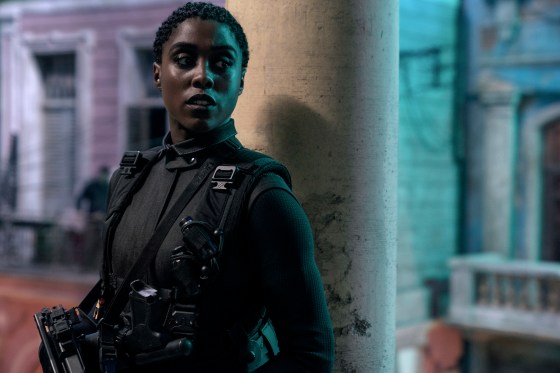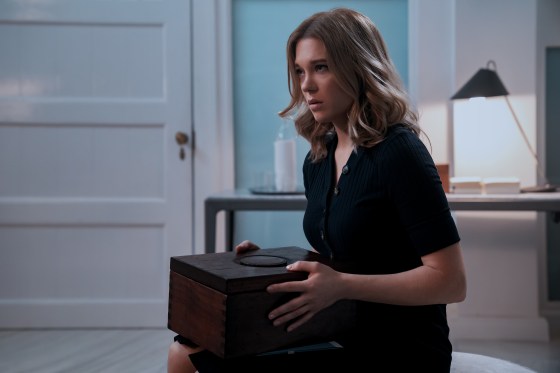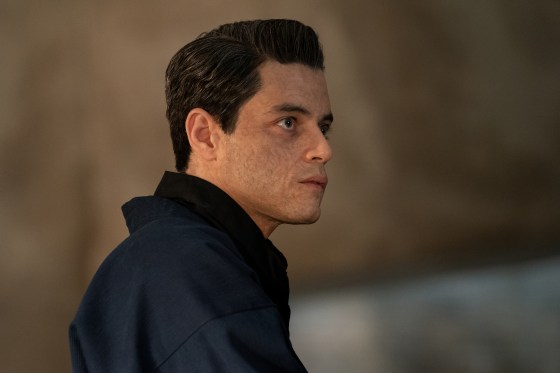September 29, 2021 at 08:57AMStephanie Zacharek
No Time to Die, the 27th movie in the James Bond franchise and the last to star Daniel Craig, isn’t the best Bond movie. Yet it may be the greatest. At two hours and 43 minutes, it’s too long and too overstuffed with plot—more isn’t always better. And it features one of the dullest villains in the series’ history, played by Rami Malek in mottled skin and dumb silky PJs. But forget all that. No Time to Die, its flaws notwithstanding, is perfectly tailored to the actor who is, to me, the best Bond of all. With his fifth movie as 007, Craig is so extraordinary he leaves only scorched earth behind. There will be other Bonds for those who want them. For everyone else, there’s Craig.
[time-brightcove not-tgx=”true”]
A summary of No Time to Die’s labyrinthine plot would be boring to write and even more boring to read, so here are a few bullet points: The evil scheme engineered by Malek’s inscrutably named Lyutsifer Safin involves bioengineered weapons tailored to an individual’s DNA; his plan is to threaten to infect the world, for no known reason other than pure villainy. Bond’s love interest is MI6 shrink Madeleine Swann (Léa Seydoux), introduced in 2015’s Spectre, and she may or may not be above board—because although Bond is always a man of his word, he often has good reason to doubt others’ loyalty. There’s an assassin skulking around in a spooky white Noh mask.

The current and extremely likable incarnation of the franchise’s second-bananas, Naomie Harris’ Miss Moneypenny and Ben Whishaw’s Q, both get adequate screen-time (and Q has a hairless cat for a pet, occasioning one of Bond’s driest quips). Bond, who’s retired as the movie opens, has been replaced by a smart, peppery new agent, Nomi (Lashana Lynch), whom he doesn’t like one bit—at least at first. The action sequences are cleanly shot and edited and generally superb: a car chase in a sun-drenched Italian village is a highlight—who doesn’t love watching a Bond vehicle rattle down a set of stone steps? Ana de Armas shows up all too briefly and is awesome. And there’s a guy with a computerized fake eyeball that’s occasionally given to popping out and rolling around—everything about this phony eyeball is funny.

There. Now that that’s out of the way, we can talk about Craig. Because that’s really what you came here for, isn’t it? The early scenes of No Time to Die are so swoonily romantic that you know none of it can last: Bond and Madeleine have swept into that little Italian town on a cloud of amour; the minute they close the door on their picturesque hotel room, they tumble into each other’s arms and into bed. On the drive up, along those characteristically twisty Italian roads, Madeleine had urged Bond to drive faster. He looked at her, amused but also sure of the words he was about to speak, and said, “We have all the time in the world.” The man who quotes Louis Armstrong, the voice behind one of the loveliest Bond themes—from On Her Majesty’s Secret Service, until now the most romantic Bond movie of all—is one you want to keep close.
Bond has plans to visit the grave of his lost love, Vesper Lynd (who was played, seemingly ages ago, by the regal Eva Green), as a way of clearing the brush so that new love can thrive. Something happens; he and Madeleine are separated, seemingly forever—the betrayal he feels settles on his face like cold fog. His eyes—as blue as ice, or cornflowers, or the Earth as viewed by astronauts, and previously alive to everything Madeleine might have done or said—simply close up shop. With her, he’d seen glimpses of a life that had long been held away from him in the years he was busy playing the game of being James Bond. Now there’s nothing left to do but retreat to a small tropical island and, in his sad and sexy way, put on some tiny shorts and head out to sea in a little sailboat and catch some fish for dinner.

His old CIA friend, Felix Leiter (Jeffrey Wright), lures him back to work for a one-off, because why not? What else is there to do? Bond goes to Cuba and puts on a tuxedo. Of all the Bonds (Connery, Brosnan, Dalton and so forth), Craig’s Bond is the least suited to tuxedo-wearing. He’s a bit stocky, not as reedlike as the others, and yet somehow he wears it best, perhaps because his vaguely sunburnt face, with its distrustful scowl, is so radiantly transformed by this most magical piece of menswear. It bottles his energy without diluting it. In it, he’s both vulnerable and powerful—none of the other Bonds ever achieved this mystical combination.
And that’s the key difference between Craig’s Bond and all the others: This Bond chooses not to charm or blast or karate-chop his way out of every scrape. He allows time to catch up with him, because he knows he can’t outrun it. The other Bonds seemed immortal—when it was time to quit, they were simply sent out to pasture, gently, to be replaced quietly by another, as if mega-producer Cubby Broccoli’s grand enterprise thought we wouldn’t notice. Though we’ve all had our favorite Bonds over the years, we almost didn’t.

The series will continue, either with a new Bond or some clever workaround. But in this imperfect picture, Craig—who nudged 007 into the 21st century, re-envisioning him as a scrapper with a soul—has drawn a closed circle around the character. What kind of life do you want for your favorite James Bond? In No Time to Die, Craig’s Bond finally gets the one he deserves, but the price he pays for it is wrenching.
Read more reviews by Stephanie Zacharek
There are far too many little chunks of story wedged into the nooks and crannies of No Time to Die (which was directed by Cary Joji Fukunaga and cowritten by Fukunaga, Phoebe Waller-Bridge and regular late-era Bond screenwriters Neal Purvis and Robert Wade). The movie could be sleeker, more nimble. But its closing sequence, an operatic whirlpool of romantic tragedy so intense it could be opera, serves Craig’s Bond so perfectly—and sees him out of this five-movie adventure with such grandeur—that the movie’s flaws fall away. In general Bond—first brought to life long ago in Ian Fleming’s novels—is a fantasy figure of freedom and licentiousness, but Craig is the only truly erotic Bond. By the end of No Time to Die, he understands what his freedom has cost him, and he doesn’t want it anymore. He throws it away for something greater.
When French screenwriter, director and producer Roger Vadim died, in 2000, he left behind one widow and four ex-wives, and all spoke of him fondly. Brigitte Bardot, Vadim’s wife from 1952 to 1957, and a woman who went on to marry several more times herself, said this of him at his funeral: “The rest were just husbands.”
Everyone has a favorite Bond. I’m sure years-long friendships have ended over drunken fights about who’s the best. Most people put their money on Connery, and he was perhaps the most coolly seductive, an elegant freeze-pop who wouldn’t melt under your touch. But as Craig has played him, Bond is a man whose blood runs close to the surface. Principled but also a bit thuggish, witty yet vaguely ornery, taciturn yet capable of being wounded, he became—by stealth, across five pictures—the best version of the character, the one we didn’t know we wanted. The rest were just Bonds.









